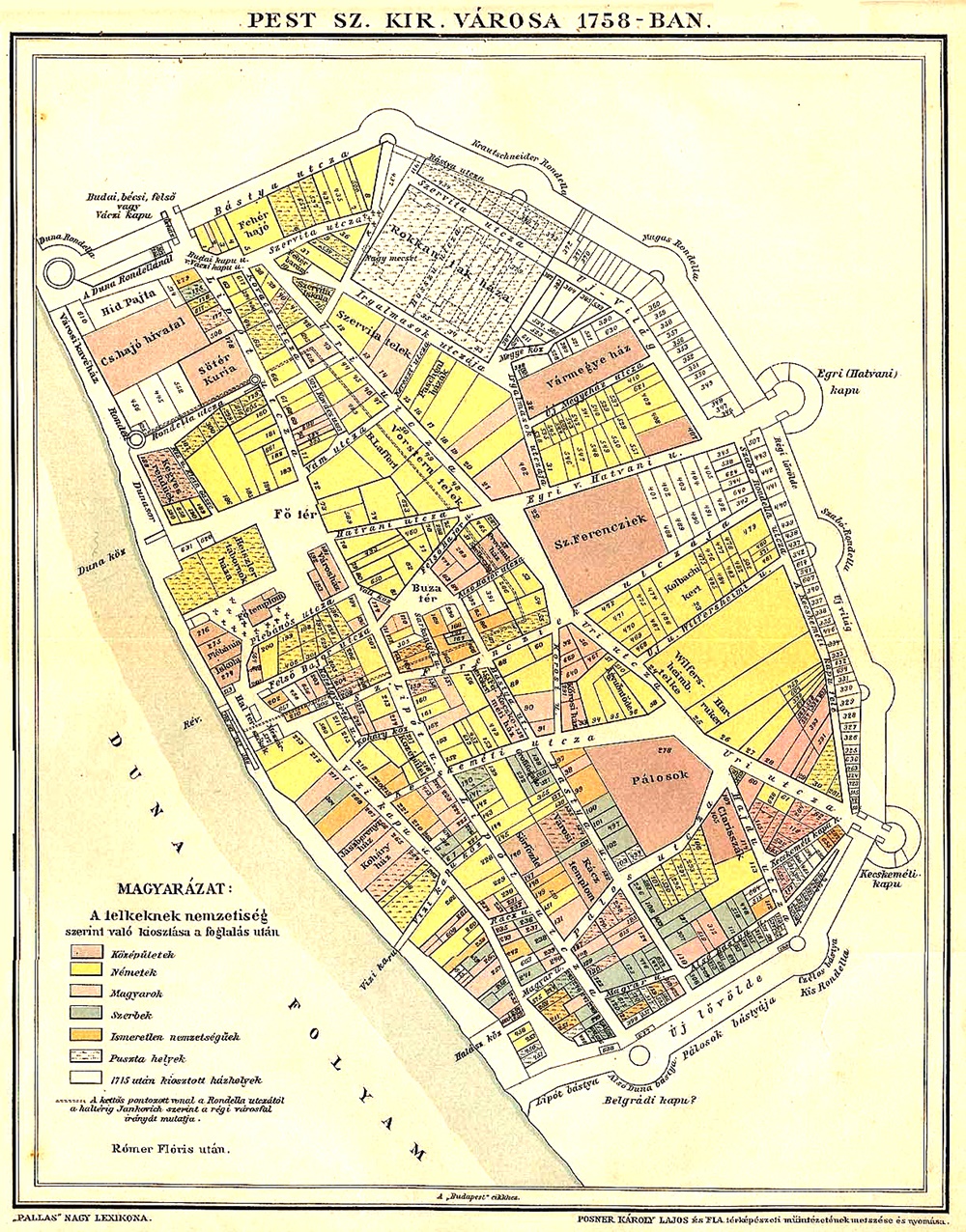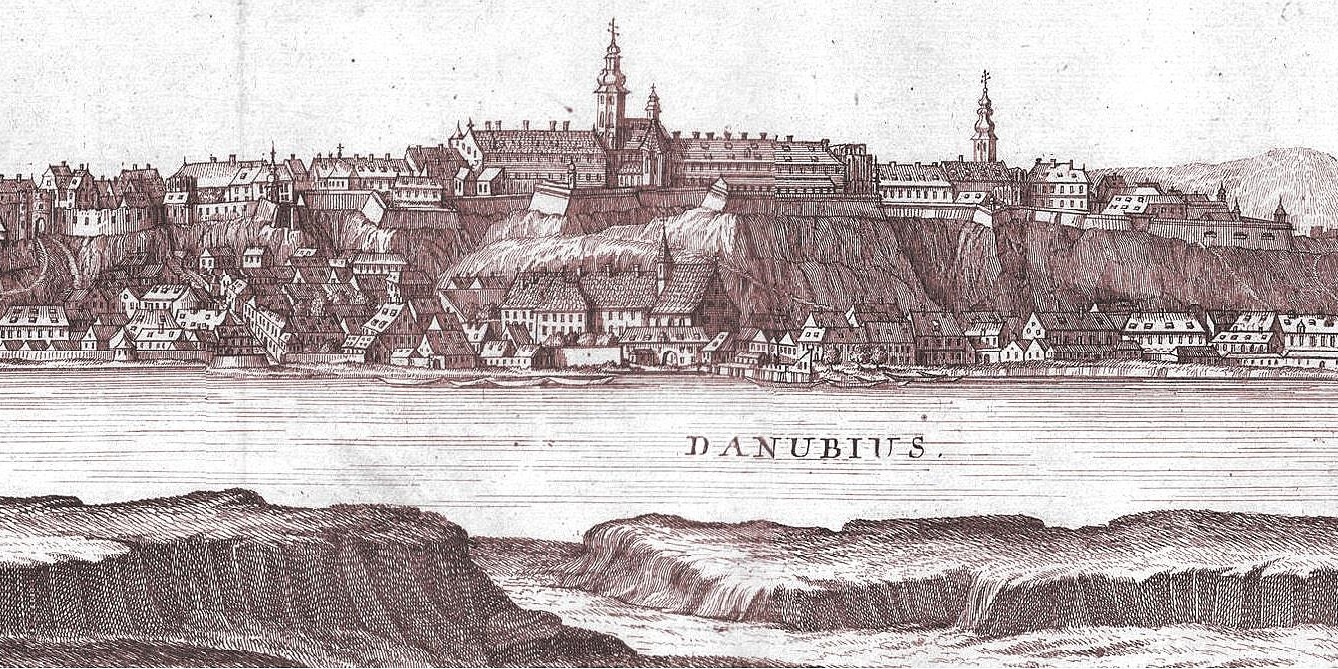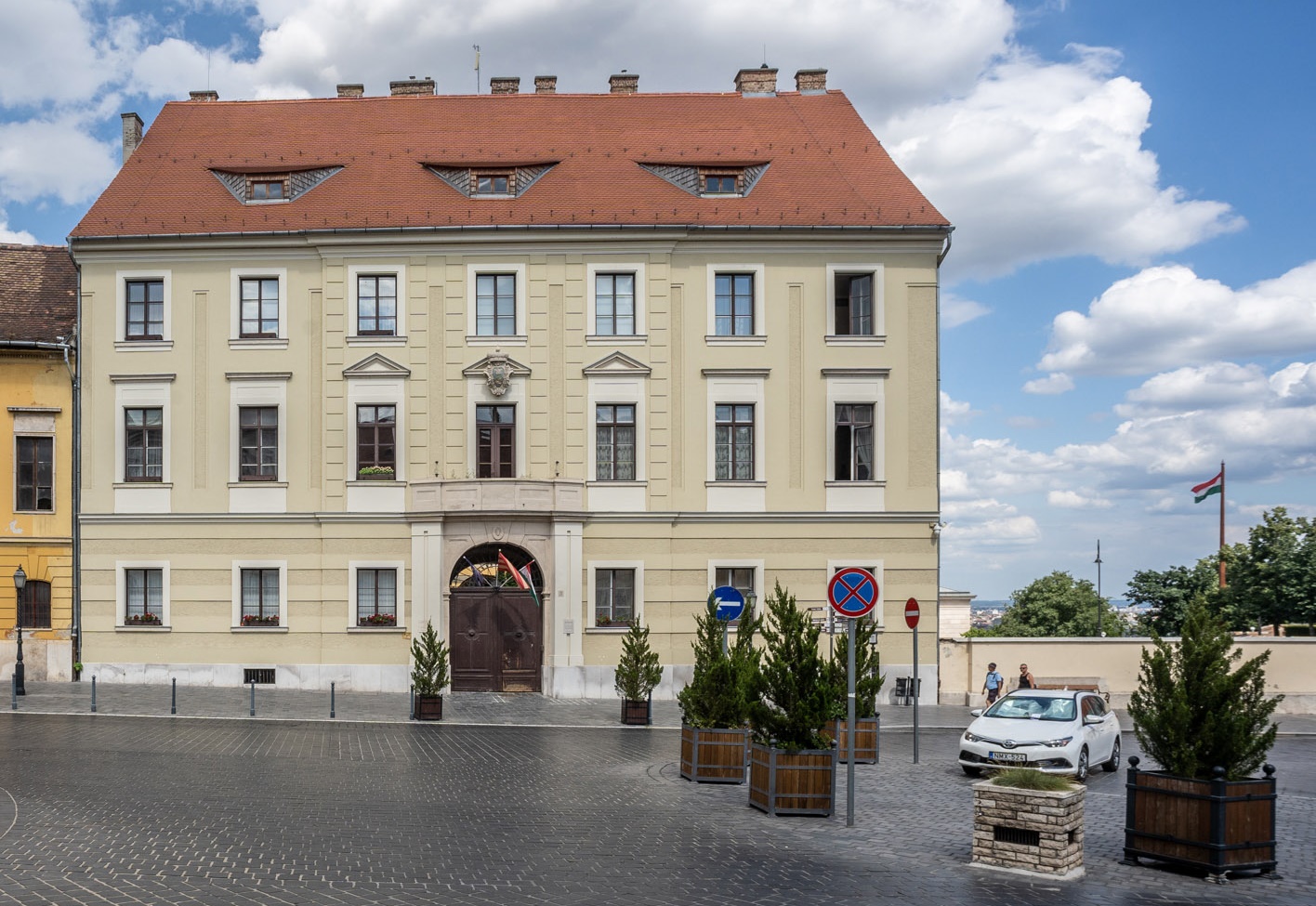The two cities had been waiting for the Queen's visit to Pest and Buda for almost a decade, rightly, since Buda officially became a royal seat again in 1741. The cities and the country were aware that the Queen would not exchange Vienna with Buda, but they hoped that she would pay her respects more often in the Hungarian capital. This hope was also nurtured by the fact that in 1749 Maria Theresa gave instructions for the further construction of the Buda Palace.
The visit of the monarch finally took place in August 1751. The Wiennerisches Diarium in Vienna reported on the visit separately (and it was also published in Hungarian by Erzsébet Hanskarl in 1939), so we know quite a lot about the details of the visit.
%20(1).jpg)
Maria Theresa in 1758, in a painting by Martin van Meytens
The queen and her entourage, including her husband, the Holy Roman Emperor Francis of Lorraine, arrived by ship from Vienna. The court was transported by a total of 20 ships. The queen reached the border of Pest on 4 August 1751 at 9 o'clock and landed here. Outside the city, he received the tribute of the mayors of Pest and Pest-Pilis-Solt counties, and visited the tripartite salt pyramid set up at the salt office (the institution supervising the strictly regulated salt trade), where Sebestyén Kaiser, royal councillor and lower Hungarian salt inspector, greeted him in German. After Maria Theresa took over the keys of the city from judge József Mosel, she entered the decorated city through the Váci gate in the midst of the ringing of bells, where a triumphal gate and a fountain - together with the salt pyramid these were prerequisites of the splendour of the era - and of course a worshipping crowd welcomed Maria Theresa. The fountain was not like any other, the jet of water holding a sphere high on it that read “Impetus ad gloriam,” meaning “Soaring to Glory,” alluding to the Queen’s war victories. The procession marched through the city in the light of torches to her lodgings.
At the time of the Queen's visit, the royal palace in Buda was already being rebuilt, so she did not stay there, but in the palace of Bishop Ferenc Barkóczy of Eger in Pest, which was considered the most beautiful house in Pest.
The multi-day royal visit included many programs. On the one hand, she was driven to Rákos's field almost every day to see the military exercise currently taking place here. Military operations were viewed from a pavilion built for this purpose, which stood on a smaller hill, the Királydomb (King's Hill), and, of course, both the Queen and the Emperor held audiences.

The city of Pest in 1758, above, at the top of the map, the location of the Vác gate can be seen
She also had time for a rural outing, as he was a guest of Antal Grassalkovich on 10 and 11 August in Gödöllő. The reception in Gödöllő was so magnificent that, according to eyewitnesses, Hungary had never seen such a holiday.
Related to this visit to Gödöllő is an interesting legend, according to which Antal Grassalkovich sledged Maria Theresa - who was fond of sledging - from Pest to Gödöllő. In August, during the summer heat, of course, there was no snow available, so legend has it that the road was sprinkled with salt so thick that the sledge slipped on it. It is likely, however, that this is just a legend, Maria Theresa is unlikely to have supported such a waste of salt. The basis of the legend may have been the salt pyramid mentioned above, which was made according to the Baroque customs.
They moved from Pest to Buda only four days after their arrival, on Sunday, 8 August 1751. The queen and her court ladies crossed the reaction ferry on a horse-drawn carriage while the emperor and her entourage rode horses to Buda.

View of Buda in the engraving of Samuel Mikovinyi in 1737
In Buda, the city council welcomed the guests, and then the chief notary of Buda, János Ferdinánd Miller, greeted them with an ornate Latin speech. The royal procession touched the then Chimney Sweeper Chapel, also known as the Blood Chapel, through the Fisherman's Town, Rácváros. Here was a copy of the image of Bleeding Virgin Mary, which made the chapel a place of pilgrimage. Today's parish church of Our Lady of the Snows in Krisztinaváros was not standing at that time, instead of the old chapel the present church was built only at the end of the 18th century. From here, she entered the actual Buda, the Castle, through the Viennese gate. The imperial couple visited the military ceremony and then the Buda palace under construction, with which they were truly satisfied.

Maria Theresa was staying in Buda, at today's 3 Dísz Square, in the palatine palace of Lajos Batthyány (Photo: Balázs Both / PestBuda.hu)
Then they returned to the palatine palace of Lajos Batthyány for breakfast. The baroque palace under today's 3 Dísz Square was built by the palatine just over 8 years earlier and was suitable for high-ranking guests with its splendour. After breakfast, they attended Mass in the Church of the Assumption, then the Queen visited the monastery of the Clarissas under construction, and the Emperor visited Rácváros.
After a few days' stay in Pest-Buda, the queen and her entourage set out for Pozsony, through Buda, on land, on 13 August. During the reign of Maria Theresa, she visited Pest and Buda only once again, in 1764, no more.
Cover photo: View of Buda in the engraving of Samuel Mikovinyi in 1737





































Hozzászólások
Log in or register to comment!
Login Registration